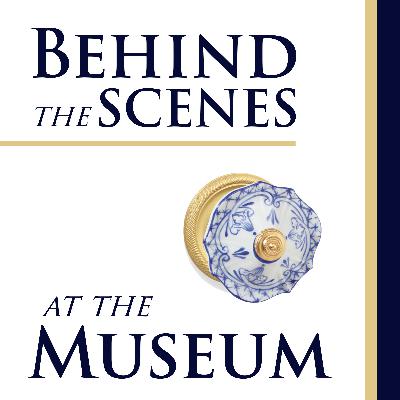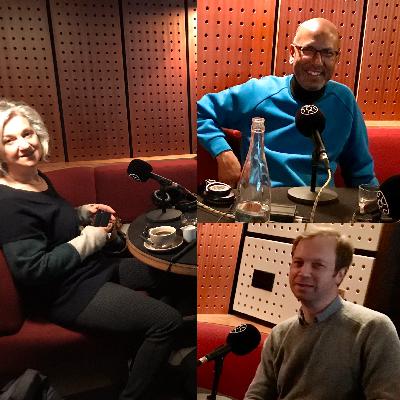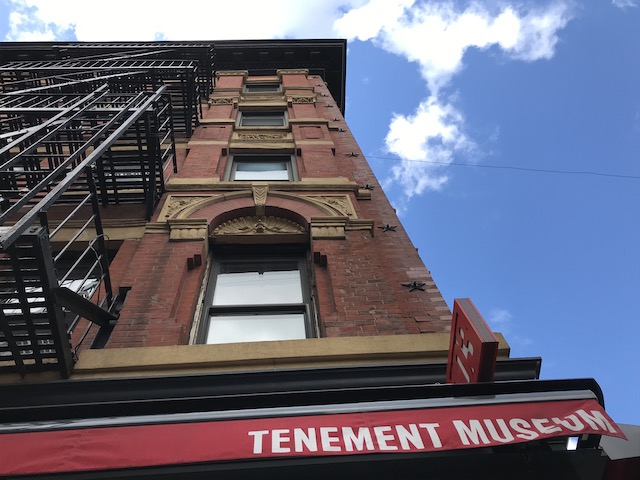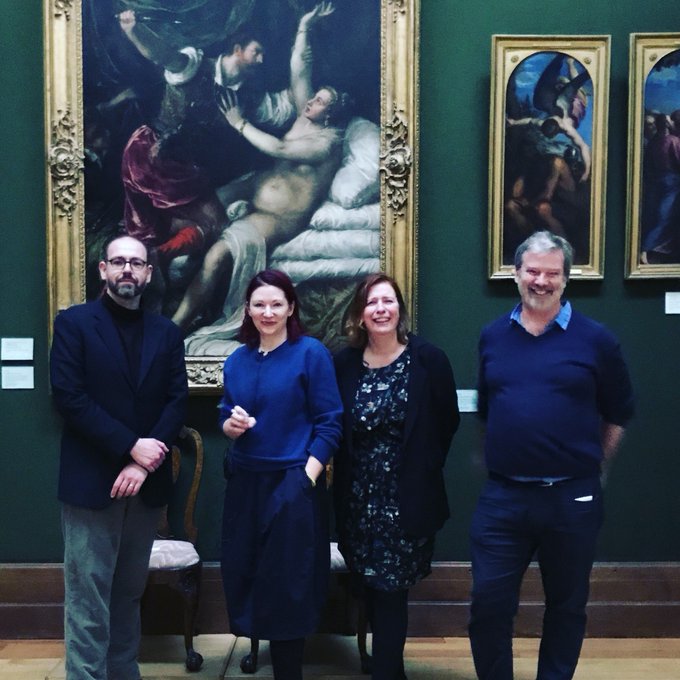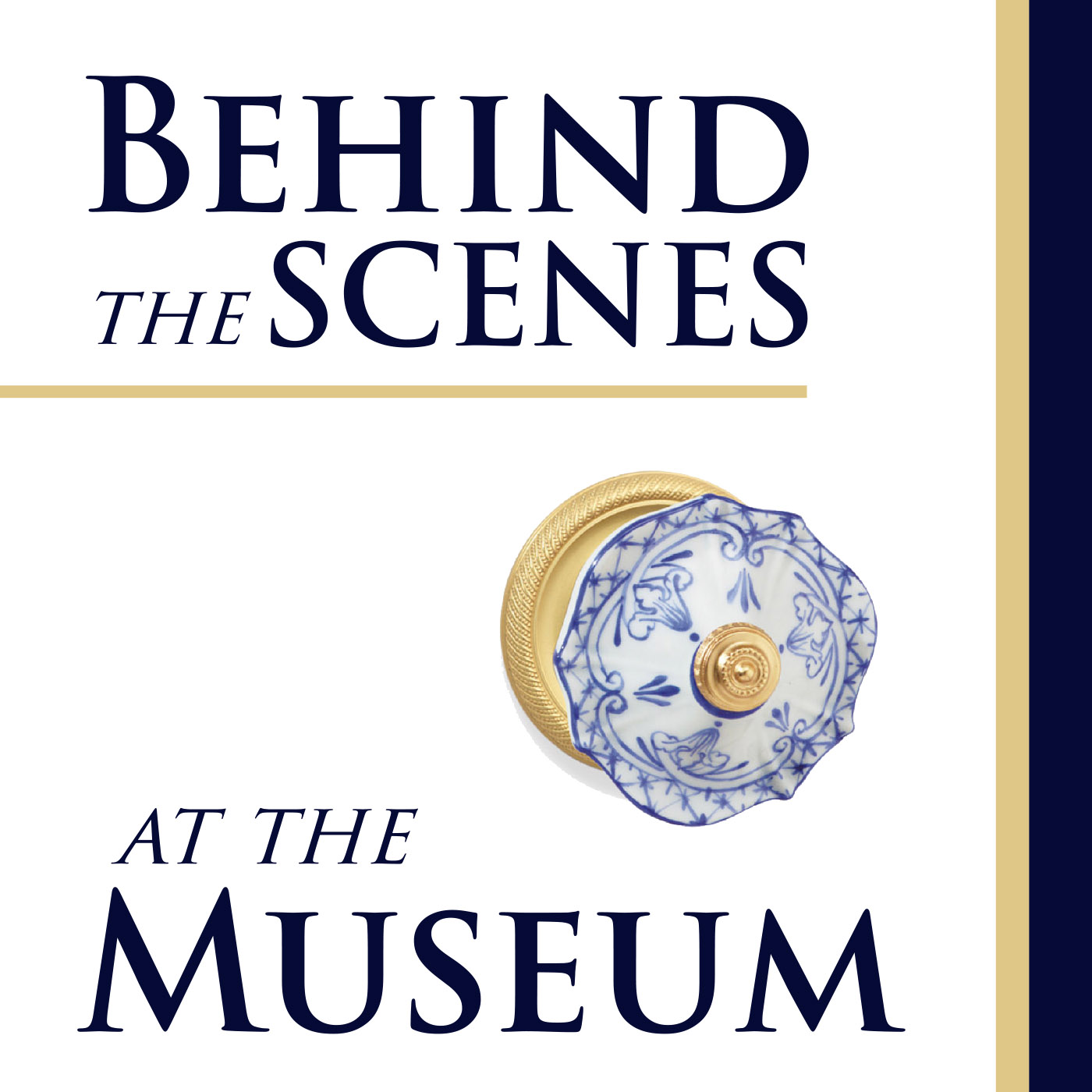Discover Behind the Scenes at the Museum
Behind the Scenes at the Museum

Behind the Scenes at the Museum
Author: Tiffany Jenkins
Subscribed: 44Played: 183Subscribe
Share
© Copyright 2019 All rights reserved.
Description
Tiffany Jenkins talks to key players in the cultural world, charting the trends and dissecting the controversies. She rummages around the store cupboard to find out what has and hasn't made the pedestal.
12 Episodes
Reverse
The British Empire and Us: a civilised disagreement with Nigel Biggar and James Heartfield Over the last five to ten years, factious arguments about the British empire, about toppling the monuments that mark it, about making reparations for it, and about to teach it in schools, have swept through our public discourse. This is a relatively new thing. We didn’t used to talk about the British empire so much and when we did, it was in a more positive and nostalgic light. Today there is a daily drip drip of the wrongs of empire. In this episode, Tiffany is joined by ethicist Nigel Biggar, the author of Colonialism: A Moral Reckoning, and James Heartfield author of Britain's Empires: A History - 1600-2020 for a discussion about the rights and wrongs of empire. Biggar aims to set the record straight on empire, to defend it, and to show why not every critique is right. Heartfield is an anti-imperialist who has long condemned empire but finds himself surprised and disquieted to have won the argument. They examine what the British empire was in its different iterations; ask whether is was racist and to what extent violence was essential part of it. (For this part they refer to Caroline Elkin's superb Legacy of Violence: A History of the British Empire which argues that it was); reflect on the role of history and whether it can and should be moral, and, finally, - this is a longer than usual episode - discuss why the turn towards seeing everything in the past is not as radical as it first appears.
Tiffany Jenkins interviews the anthropologist Adam Kuper about his new book, The Museum of Other People: From Colonial Exhibitions to Cosmopolitan Exhibitions. Adam talks about the history of anthropology museums and the crisis in which they find themselves today. They discuss the collections of human remains, and objects that were taken in imperial wars. They talk about the Benin Bronzes and the problems with the drive to return them in the present moment. Adam Kuper was most recently Centennial Professor of Anthropology at the London School of Economics and a visiting professor at Boston University. A Fellow of the British Academy and a recipient of the Huxley Medal of the Royal Anthropological Institute, Kuper has appeared many times on BBC TV and radio and he has reviewed regularly for the London Review of Books, the Times Literary Supplement, and the Wall Street Journal. Read more about him and The Museum of Other People in this THES interview https://www.timeshighereducation.com/depth/adam-kuper-insiders-understanding-not-always-deeper-expertsBehind the Scenes at the Museum is now on Substack. Sign up here for more information about the show and cultural commentary. https://behindthescenesatthemuseum.substack.com/
Sir Peter Bazalgette has had a long and productive career in the arts. He is currently non-executive chairman of ITV, where we meet for a wide-ranging conversation. He has been Chairman of English National Opera and Chair of Arts Council England (2012 until 2016). He is Chair of the the Baillie Gifford Prize for Non-Fiction, and author of The Empathy Instinct: How to Create a More Civil Society (2017).
We talk about the future of the BBC (he is one of the most influential men in broadcasting), arts funding and sponsorship in an age of moral purity, making a case for the arts to government, repatriation of artefacts, the role of art post Brexit, and art in age of the internet.
► MUSIC
Signature tune: Nick Vander Black Kopal - Galaxy II
► PICTURES
Pictures are available on Instagram and Twitter account: @behindthemuseum
► CREDITS
This episode of Behind the Scenes at the Museum was written and presented by Tiffany Jenkins, audio recording was by Nicky Barranger. Jac Phillimore was the producer.
Censorship of the arts is on the increase: both that imposed from above, by the state, but also from below, with artists calling for works to be taken down from display. This episode of Behind the Scenes of the Museum brings together three experts – Julia Farrington, Associate Arts Producer at Index on Censorship, artists mentor Manick Govinda, and the art critic JJ Charlesworth – to discuss the significant cases, and analyse what is going on: what is new (as compared to the old style Mary Whitehouse kind of censorship); why do institutions capitulate so easily to complaints; and what is to be done.
► PANEL
Julia Farrington, Associate Arts Producer, Index on Censorship. Twitter: @IndexCensorship
Manick Govinda, Arts consultant and mentor. Twitter: @manick62
JJ Charlesworth, Critic, Art critic, senior editor ArtReview. Twitter: @jjcharlesworth
► CASES DISCUSSED
1. Homegrown: commissioned by the National Youth Theatre
See also, Channel 4 news report, with an interview with the director Nadia Latif
2. Isis Threaten Sylvania , the Mall Galleries
3. Saatchi Gallery covers two paintings by an artist known as SKU
4. Drill music removed from You Tube
See also, Gang members banned from making Drill music
5. Brett Bailey’s, Exhibit B
Petition: 'Withdraw the racist Exhibition "Exhibit B - The Human Zoo" from showing at the Barbican from 23rd-27th September 2014'
See also, this news report & discussion on BBC1 Sunday Morning Live, from 28 Sept 2014.
Louise Jeffries from the Barbican on Radio 4's Front Row on why and how the Barbican cancelled Exhibit B.
6. Protests over Dana Schutz's portrait of Emmett Till at the Whitney Biennial
► READ MORE
Are we entering a new age of artistic censorship? Tiffany Jenkins New Republic
Other cases, including those tackled by Julia Farrington & examples of institutional training to deal with sensitive subjects
How the Dana Schutz Controversy—and a Year of Reckoning—Have Changed Museums Forever, Julia Halperin
► MUSIC
Signature tune: Nick Vander Black Kopal - Galaxy II
► PICTURES
Pictures of the artwork and clips of news reports are available on Instagram and Twitter account: @behindthemuseum
► CREDITS
This episode of Behind the...
Tiffany visits the Tenement Museum in New York with its President, Kevin Jennings. Located at 97 and 103 Orchard Street in the Lower East Side of Manhattan, the museum is formed from two historical tenement buildings, which were home to an estimated 15,000 immigrants from over 20 nations, between 1863 and 2011.
Starting in 97 Orchard street, they discuss the aims of the Tenement Museum: is it political?; does and should the museum take sides?; the history of immigration policy; the difficulties in talking about immigration today — when society is so divided and issue so emotional — and the importance of doing so.
Kevin tells us about the families who lived in these tenements: Nathalie and Julius Gumpertz who were East Prussian immigrants, who lived there in the 1870s. In 1874, after the Panic of 1873, a major economic depression, Julius left for work never to return, leaving Nathalie alone with four young children. We hear about Adolfo and Rosaria Baldizzi, who came from Sicily. Rosario arrived undocumented and illegally. She would eventually become a legal citizen of the United States.
Moving on to 103 Orchard street, we hear about Kalman and Regina Epstein, who were Holocaust survivors, and among the first World War II refugees to be allowed into the United States, and their daughter Bella; whose memories helped decorate and furnish the apartment. Taking us up to the recent past, Tiffany and Kevin visit the old apartment of the Wong family. Mrs. Wong, who was from Southern China, arrived in New York from Hong Kong in 1965 with her two daughters, Yat Ping and Alison, after the Hart Cellar Act, which allowed for increased Asian immigration. Mrs Wong worked in the garment industry and in 1973 she became a citizen of the United States.
► LINKS
The Tenement Museum
Nathalie and Julius Gumpertz
Adolfo and Rosaria Baldizzi
Kalman and Regina and Bella Epstein
Mrs Wong and her family
► MUSIC
1) Signature music , Nick Vander - Black Kopel - Galaxy II
2) Fig Leaf Times Two, Kevin MacLeod
3) After the Ball is Over, Gerald Adams & The Variety Singers
4) Brahms Symphony No.3 in F Maj: I. Allegro Con Brio, conducted by Willem Mengelberg
5) Frogs Leg Rag, James Scott (freemusicarchive.org)
6) Victor Orchestra, Glow Worm (1908)
7) Guido Gialdini whistling Luigi Arditi's The Kiss (1908), public.domain domain.org
8) Tim Hart - Royalty Free Music Large Collection - Track 45 - No Words
► PICTURES
Pictures of the street, apartments, museum, and the families are on our Instagram and Twitter account: @behindthemuseum
► CREDITS
This episode of Behind the Scenes at the Museum was written and presented by Tiffany Jenkins, recorded by Jared Arnold, and produced by Jac Phillimore.
Twitter: @BehindtheMuseum
Instagram: @BehindtheMuseum
Tiffany Jenkins goes to the Fitzwilliam Museum in Cambridge to talk to its director Luke Syson, art historian Jill Burke and Michael Savage (aka Grumpy Art Historian) about Titian’s Tarquin and Lucretia, and rehanging paintings in the age of #MeToo.
► ART WORK DISCUSSED
John William Waterhouse’s Hylas and the Nymphs
Raphael’s Lucretia
Sandro Botticelli's The Story of Lucretia
Titian’s Tarquin and Lucretia
Titian's Rape of Europa
Nicholas Poussin
I Modi - The Sixteen Pleasures
► PARTICIPANTS
Luke Syson Instagram: Luke Syson
Jill Burke Twitter: @jill_burke
Michael Savage Twitter: @GrumpyArt
Fitzwilliam Museum Twitter: @FitzMuseum_UK
► READ MORE
On the decision to temporarily remove John William Waterhouse’s Hylas and the Nymphs
Jill Burke on The Power of Sexual Assault in Titian’s Tarquin and Lucretia
Prof Mary Beard on Lucretia and the politics of sexual assault
► MUSIC
Signature tune: Nick Vander Black Kopal - Galaxy II
A Himitsu, Track Name: "Reminisce" @ https://soundcloud.com/a-himitsu Original upload HERE - Official "A Himitsu" YouTube Channel HERE
License for commercial use: Creative Commons Attribution 3.0 Unported (CC BY 3.0) https://creativecommons.org/licenses/...Music promoted by NCM https://goo.gl/fh3rEJ
► CREDITS
This episode of Behind the Scenes at the Museum was written and presented by Tiffany Jenkins, recorded by Nicky Barranger, and produced by Jac Phillimore.
Twitter: @BehindtheMuseum
Instagram: @BehindtheMuseum
Vera Worth was a good looking shop girl from Bristol, who followed fashion with a passion. In the 1930s, after marrying John, she scrimped and saved to buy a glamorous gown fit for a film star, and wore it to an important company dinner dance. The knockout dress and its jacket were designed by flamboyant designer to the stars, Elsa Schiaparelli. Photographs of Vera in the dress (available on Instagram, Twitter and Facebook @behindthemuseum) show her looking fabulous, beaming; onlookers are smiling with pleasure and in amazement.
After passing her precious garment to her granddaughter, Amanda, who showed it a good time, the ensemble was put up for auction. Vera's Schiaparelli sold at Kerry Taylor’s auction house at the end of 2018. It was bought by the philanthropist Krystyna Campbell-Pretty for the National Gallery of Victoria in Melbourne where it is now on show, delighting audiences for decades to come.
Tiffany goes behind the scenes to discover the story of Vera Worth, and her Schiaparelli dress and jacket; the backstory of a museum object on a pedestal. She visits Kerry Taylor auctions, Vera's granddaughter, Amanda Ellis, and speaks via Skype to Katie Somerville, Senior Curator, Fashion and Textiles, at the National Gallery of Victoria.
LINKS
Maison Schiaparelli
Kerry Taylor auctions
Katie Somerville and the NGV
Visit us on Twitter, Facebook and Instagram @behindthemuseum to see pictures of Vera and her Schiaparelli dress.
The Africa Museum in Brussels reopened at the end of 2018 after a 5 year renovation. Tiffany Jenkins and Fiammetta Rocco, culture correspondent at The Economist, tour the museum with its Director-General, Guido Gryseels, and assess its attempts to come to terms with a horrific past.
The Africa Museum (officially called the Royal Museum for Central Africa) grew out of the Brussels International Exposition of 1897. The Colonial Pavilion, located at King Leopold II of Belgium’s estate, formed the basis of the museum. It was intended to celebrate his achievements in what was then the Congo Free State, which he ran as his private estate. In 1909, when Leopold died, the museum was transferred to the Belgian state, and opened a year later as the Museum of Belgian Congo.
Tiffany, Fiammetta and Guido talk about the museum’s attempt to tell the story of Belgian rule in the Congo, which was unparalleled in its cruelty and mass killing. Under the reign of terror instituted by Leopold, as many as 8 million Africans (perhaps even 10 million, according to Adam Hochschild) lost their lives.
► GUESTS
Fiammetta Rocco’s article on the Africa Museum The Struggle to Tell the Story of Colonialism Follow her on Twitter @FiammettaRocco
Guido Gryseel’s biography
The website for Africa Museum Twitter: @africamuseumbe YouTube: channel
► FEATURED ARTISTS
Take a look at Freddy Tsimba’s website and see more of his artwork:
Here, Aimé Mpane talks about his installation Congo: Shadow of the Shadow (2005), on loan to the LACMA from the Smithsonian Institution's National Museum of African Art. The piece uses the play of light and shadow, to explore the re-shaping of power during the colonial period in Congo
► FURTHER INFORMATION
Adam Hochschild’s King Leopold's Ghost: A Story of Greed, Terror and Heroism in Colonial Africa is the book on the exploitation of the Congo Free State by King Leopold II of Belgium between 1885 and 1908, as well as the large-scale atrocities committed during that period.
► MUSIC
Signature tune: Nick Vander, "Galaxy I" from the album Black Kopal
1. "Congo Spirit" (Underscore version) - By Abbas Premjee
Licensed from ShockwaveSound.com
2. “Mupepe” from the album Adventures in Afropea
Performed by Zap Mama
Written by Marie Daulne
(p) 1991 Crammed Discs
3. Tim Hart
Track 38 - January's Dream Number Five
Album: Royalty-Free Music Large Collection - (100+ Tracks)
4. Tim Hart
Track 89 - Velvet Carpet Clouding
Album: Royalty-Free Music Large Collection - (100+ Tracks)
5. “Mupepe”
Performed by Zap Mama
Written by Marie Daulne
(p) 1991 Crammed Discs
► PICTURES AND SOCIAL MEDIA
Behind the Scenes at the Museum is on Twitter & Instagram: @BehindtheMuseum
---
Behind the Scenes at the Museum is written and presented by Tiffany Jenkins and produced by Jac Phillimore.
Tiffany is joined by the art critic and TV documentary maker, Waldemar Januszczak, the writer Michael Savage (Grumpy Art Historian), and the ex-museum director, Tom Freudenheim (Old Fart Thoughts On Museums) to discuss whether arts sponsorship should be ethical.
They reflect on the significance of the decision taken in March 2019 by the National Portrait Gallery and the Sackler Trust not to proceeded with a £1m donation, questioning to what extent we are seeing a tipping point in arts funding. They assess to what extent the politicisation of museums is a new phenomena, or if it has been part of the cultural world for decades, and argue over whether it's a positive or negative development, before reflecting on where vital money for the art world will come from, including... museum charging.
► GUESTS
Waldemar Januszczak, is an art critic and and television documentary maker. He tweets at @JANUSZCZAK. You can read his Sunday Times article compelling the dropping of Sackler sponsorship here: The ugly truth about art: why Nan Goldin is taking on the Sacklers
Michael Savage blogs here, as Grumpy Art Historian. He tweets at @GrumpyArt
Tom Freudenheim can be found writing in the Wall Street Journal and here on OFTOM He has a twitter account, but doesn't really tweet @TomFreudenheim
► FURTHER INFORMATION
Find out more about Pain (Prescription Addition Intervention Now) organised by Nan Goldin to address the opioid crisis, here.
Read Adrian Ellis, director of AEA Consulting, in the Art Newspaper, on increased public scrutiny of museum boards in a social media age, which sets this issue in a broader context.
► MUSIC
Signature tune: Nick Vander Black Kopal - Galaxy I
The rest:
Tim Hart - Royalty-Free Music Large Collection (100+ Tracks) - Track 24 Ecstatic Waltz
Tim Hart - Royalty-Free Music Large Collection (100+ Tracks) - Track 40 Keys
► SOCIAL MEDIA
Behind the Scenes at the Museum is on Instagram: @BehindtheMuseum & Twitter: @BehindtheMuseum
---
Behind the Scenes at the Museum is written and presented by Tiffany Jenkins and produced by Jac Phillimore.
Tiffany Jenkins talks to Jill Burke, a prize-winning researcher in Italian Renaissance art history, senior lecturer at the University of Edinburgh, and associate editor of Renaissance Studies, about the Renaissance Nude.
They discuss the hidden influences and impact of the Renaissance nude upon the social and political reality of Italy – why did representations of the nude proliferate in this period? What kind of society produced them? What did they mean? What was the difference between the male and female nude – and who was doing the looking?
► LINKS AND FURTHER INFORMATION
‘The Italian Renaissance Nude’, by Jill Burke, which, incredibly, is the first scholarly monograph to focus on the inception of the Italian Renaissance Nude is available from Yale University Press.
Read more by Jill Burke on her blog.
Find out more about the RA’s exhibition the Renaissance Nude.
► MUSIC
Signature tune: Nick Vander - Galaxy I - Black kopal - 20190123 1206
The rest:
Artist: Liam Thomas Title: No Time Listen on YouTube: https://youtu.be/QVwZmQkJ6Sw
Music provided by HearWeGo - (Royalty free)
► PICTURES/GET IN TOUCH
The image used for the episode is Saint Sebastian by Agnolo Bronzino 1533 & is on loan to the RA from the Museo Nacional Thyssen-Bornemisza, Madrid.
Further images discussed in this episode are available on Instagram: @BehindtheMuseum
Twitter: @BehindtheMuseum
---
Behind the Scenes at the Museum is written and presented by Tiffany Jenkins and produced by Jac Phillimore.
Tiffany Jenkins talks to the director of the V&A in London, Tristram Hunt, about who owns culture, and what to do with looted objects. They take a close look at a stunning gold crown, seized by the British Army during the 1868 Abyssinian Expedition (modern day Ethiopia), and discuss President Macron’s commissioned Sarr-Savoy report on returning African artefacts acquired in the colonial era.
► LINKS:
Find out more about the Maqdala treasures, on the V&A blog:
Find out about AFROMET - The Association for the Return of The Maqdala Ethiopian Treasures.
Read the Sarr-Savoy Report ‘The Restitution of African Cultural Heritage, Toward a New Relational Ethics’:
► MUSIC:
Signature tune: Nick Vander Black Kopal - Galaxy I
The rest: Lobo Loco - www.musikbrause.de
Just a Moment (ID 944), Psychedelic Blues 1 (ID 997), Sleeping Dragons
(ID 1018)
Creative Commons License (by-nc-nd)
Tim Hart
Royalty - Free Music Large Collection (100+ Tracks) -
Track 25 - The Eleventh Sun
Track 91 - Walking with the Night
Track 81 - The Bridge
► PICTURES:
INSTAGRAM - @BehindtheMuseum TWITTER - @BehindtheMuseum
___
Behind the Scenes at the Museum is presented by Tiffany Jenkins and produced by Jac Phillimore.
Introducing 'Behind the Scenes at the Museum'. A new podcast in which the writer, Tiffany Jenkins, talks to key figures about the big ideas rocking the cultural world, charting the trends and dissecting the controversies.
Hosted by Tiffany Jenkins.
Produced by Jac Phillimore.
Twitter: @behindthemuseum
Instagram: @behindthemuseum
Website: https://tiffanyjenkinsinfo.com
Signature tune:
Nick Vander
Black Kopal - Galaxy I
https://nickvander.bandcamp.com/
► Additional music by: Ross Bugden • Follow Ross Bugden on SoundCloud HERE - https://soundcloud.com/rossbugden • SUBSCRIBE to the Ross Bugden YouTube channel HERE - https://www.youtube.com/channel/UCQKG... • Follow Ross Bugden on Twitter HERE - https://twitter.com/RossBugden • Follow Ross Bugden on Instagram HERE - https://www.instagram.com/rossbugden/


